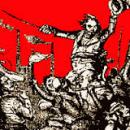Anda buenisimo...8 faders pero 32 canales...knobs para paneo o para send...
una excelente compra

me alegra saberlo. me llegara en unas semanas. ya la compre.
sobretodo la quiero para autmatizar pistas..
yo puedo ir escuchando.. bajar el volumen de un fadder, y se queda guardado ahi...?
gracias

Ah....si....el manual es un desastre......
y tenes el BCVFIEW...que te pone en pantalla el display de la mackie...honestamente nunca me hizo falta....

Pues a mi el bcf view no me va bien, sera por que tengo el vista? lo que me pasa es lo siguiente, si abro el bcfview y el cubase con la mesa en modo mackie los faders y knobs responden desde la mesa del cubase al controlador pero no viceversa, si muevo un fader del controlador en el cubase no se mueve y es mas, el fader vuelve a su posicion original, los botones tampoco funcionan. repito, sera pk tengo windows vista?
Y otra cosilla, como se configuraria via midi? in in, in out, out in, out out? pk probe de varias maneras y no consiguo que tenga señal.
Hai alguna solucion para lo del bcfview?
Y si el manual es un cacao, que les costaba explicarlo menos tecnico....
SALUDOS!

No sé si te servirá de ayuda porque no la utilizo en cubase y tengo xp, pero en cuanto a lo del BCFview, asegúrate de iniciarlo antes abrir el secuenciador y si tienes más dispositivos midi conectados asegurate de que va a responder a la controladora (click con el botón derecho y te sale un menú contextual, selecciona ahí el BCF2000-1). Luego en el secunciador yo a veces tengo que volver a seleccionar en el menú de superficies de control (no sé si tendrás uno en cubase) la BCF tanto read como para write, porque a veces aparce se cruzan los dispositivos midis. Comprueba eso también.
Un saludo

No me entero nada con el inglés...
Pero vamos kreo que entendi que la conexion midi seria con dos cables midi, me ekivoco?

joer menudo cacao, es que soy novato pero novato...
A mi lo que me interesa saber es, si se puede conectar el controlador sin que valla por usb, o sea con cable midi, en caso de tal cuantos me hacen falta y a donde tengo que enchufarlos y si en caso de que se pueda hacer funcionaria en modo mackie universal? por que para ir tirando es lo que necesito.
Me stoy leyendo el manual pero no me voy enterando de mucho.
Lenizion tu la bcf la tienes enchufada con usb o por midi?







